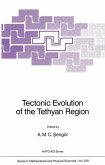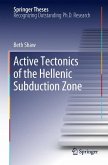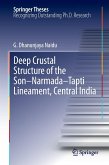This volume opens up new perspectives on the physics of the Earth's interior for graduate students and researchers working in the fields of geophysics and geodesy. It looks at our planet in an integrated fashion, linking the physics of its interior to the geophysical and geodetic techniques that record, over a broad spectrum of spatial wavelengths, the ongoing modifications in the shape and gravity field of the planet. Basic issues related to the rheological properties of the Earth's mantle and to its slow deformation will be understood, in both mathematical and physical terms, within the framework of an analytical normal mode relaxation theory. Fundamentals of this theory are developed in the first, tutorial part. The second part deals with a wide range of applications, ranging from changes in the Earth's rotation to post-seismic deformation and sea-level variations induced by post-glacial rebound. In the study of the physics of the Earth's interior, the book bridges the gap between seismology and geodynamics.
"In accordance with its title, the book by R. Sabadini and B. Vermeersen covers a variety of global processes that can be described by the normal-mode theory of viscoelastic relaxation for a spherical Earth. As such, it clearly fills a gap in today's geophysical literature. Whereas edited books or comprehensive reviews covering particular aspects of the application of normal mode theory - in particular glacial-isostatic adjustment - appeared in the past, an overview covering all aspects of its application has been missing. In addition, the publication of this book is also timely since - after a continuous development over more than 30 years - the normal-mode theory of viscoelastic relaxation has now reached a mature stage and approaches its limits. ... the authors have completed a thorough and rather comprehensive review of viscoelastic normal-mode theory and its applications. For this reason, their book can be recommended to graduate students and researchers wishing to gain accessto this topic in a convenient way." (Detlef Wolf, IAG Newletter, March 2005)
"A remarkably broad suite of problems in global and regional dynamics can be tackled using the tools of normal model relaxation theory, including the analysis of geological and geodetic data related to 3-D crustal motions, gravity anomalies, post-seismic deformations, sea-level variations and long-term changes in rotation. This book provides an unusually accessible and comprehensive development of the theory and a very lucid description of applications that emphasize physical insight. It will serve as an authoritative resource for scientists at all levels who are active, or simply interested, in this increasingly rich research area, particularly as a host of exceptionally accurate modern techniques are being applied to constrain the evolution of the Earth system."
(Jerry X. Mitrovica, March 2004)
"This book provides a detailed and wide-ranging discussion of solid-Earth dynamics based on the theory of visco-elastic deformation using normal modes. A complete mathematical treatment of the underlying physics is presented and this will appeal to graduate students and researchers alike. The analytical treatment of deforming multi-layered Earth models will be of special interest as well as the many applications which include long-term global sea-level variations, earth rotation changes and post-seismic relaxation. The integration of such a wide range of topics in global dynamics will provide a useful basis for both teaching and research."
(Alessandro M. Forte)
"A remarkably broad suite of problems in global and regional dynamics can be tackled using the tools of normal model relaxation theory, including the analysis of geological and geodetic data related to 3-D crustal motions, gravity anomalies, post-seismic deformations, sea-level variations and long-term changes in rotation. This book provides an unusually accessible and comprehensive development of the theory and a very lucid description of applications that emphasize physical insight. It will serve as an authoritative resource for scientists at all levels who are active, or simply interested, in this increasingly rich research area, particularly as a host of exceptionally accurate modern techniques are being applied to constrain the evolution of the Earth system."
(Jerry X. Mitrovica, March 2004)
"This book provides a detailed and wide-ranging discussion of solid-Earth dynamics based on the theory of visco-elastic deformation using normal modes. A complete mathematical treatment of the underlying physics is presented and this will appeal to graduate students and researchers alike. The analytical treatment of deforming multi-layered Earth models will be of special interest as well as the many applications which include long-term global sea-level variations, earth rotation changes and post-seismic relaxation. The integration of such a wide range of topics in global dynamics will provide a useful basis for both teaching and research."
(Alessandro M. Forte)








